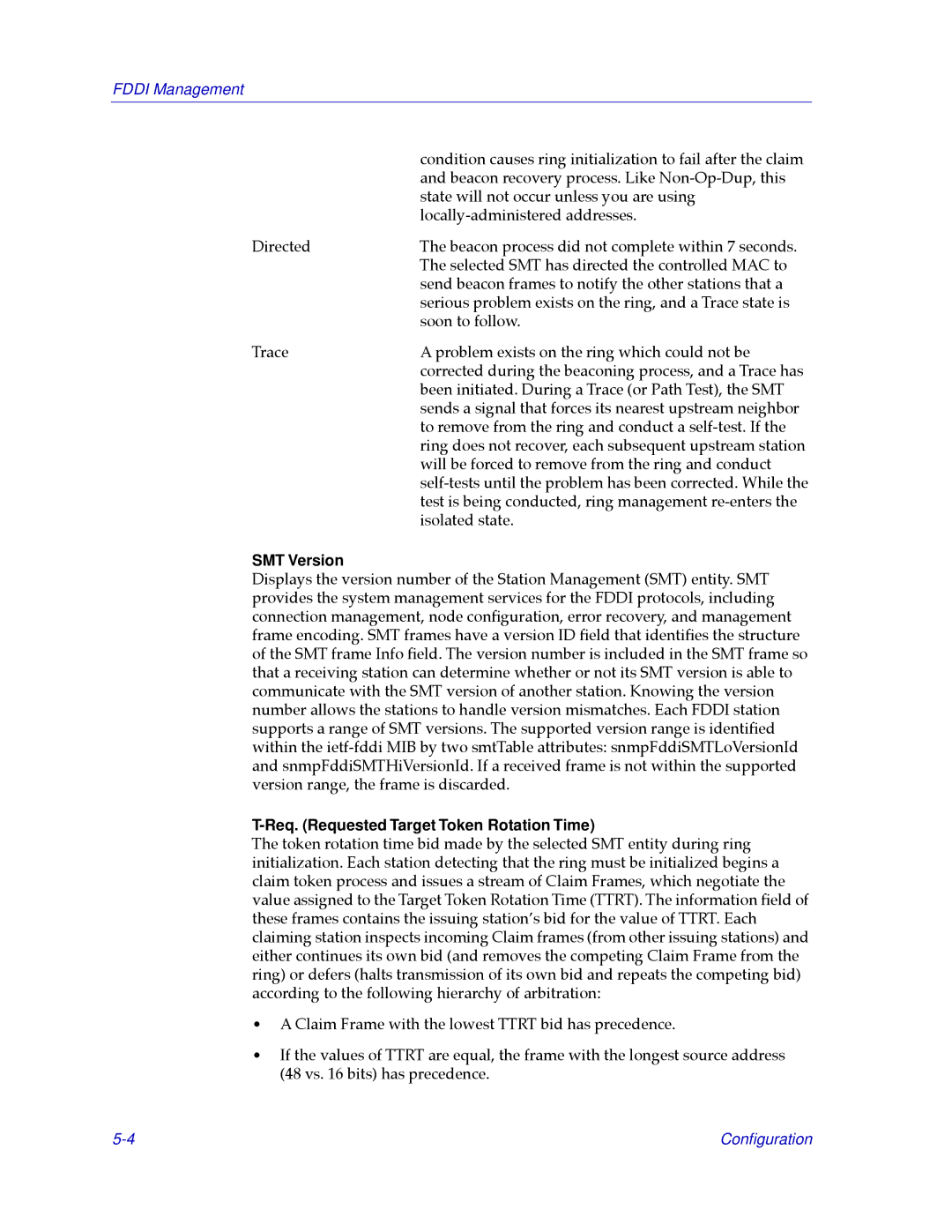FDDI Management
| condition causes ring initialization to fail after the claim |
| and beacon recovery process. Like |
| state will not occur unless you are using |
| |
Directed | The beacon process did not complete within 7 seconds. |
| The selected SMT has directed the controlled MAC to |
| send beacon frames to notify the other stations that a |
| serious problem exists on the ring, and a Trace state is |
| soon to follow. |
Trace | A problem exists on the ring which could not be |
| corrected during the beaconing process, and a Trace has |
| been initiated. During a Trace (or Path Test), the SMT |
| sends a signal that forces its nearest upstream neighbor |
| to remove from the ring and conduct a |
| ring does not recover, each subsequent upstream station |
| will be forced to remove from the ring and conduct |
| |
| test is being conducted, ring management |
| isolated state. |
SMT Version
Displays the version number of the Station Management (SMT) entity. SMT provides the system management services for the FDDI protocols, including connection management, node conÞguration, error recovery, and management frame encoding. SMT frames have a version ID Þeld that identiÞes the structure of the SMT frame Info Þeld. The version number is included in the SMT frame so that a receiving station can determine whether or not its SMT version is able to communicate with the SMT version of another station. Knowing the version number allows the stations to handle version mismatches. Each FDDI station supports a range of SMT versions. The supported version range is identiÞed within the
T-Req. (Requested Target Token Rotation Time)
The token rotation time bid made by the selected SMT entity during ring initialization. Each station detecting that the ring must be initialized begins a claim token process and issues a stream of Claim Frames, which negotiate the value assigned to the Target Token Rotation Time (TTRT). The information Þeld of these frames contains the issuing stationÕs bid for the value of TTRT. Each claiming station inspects incoming Claim frames (from other issuing stations) and either continues its own bid (and removes the competing Claim Frame from the ring) or defers (halts transmission of its own bid and repeats the competing bid) according to the following hierarchy of arbitration:
¥A Claim Frame with the lowest TTRT bid has precedence.
¥If the values of TTRT are equal, the frame with the longest source address (48 vs. 16 bits) has precedence.
Configuration |
